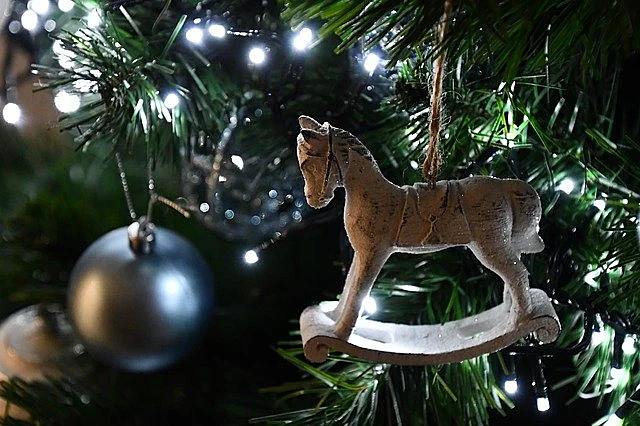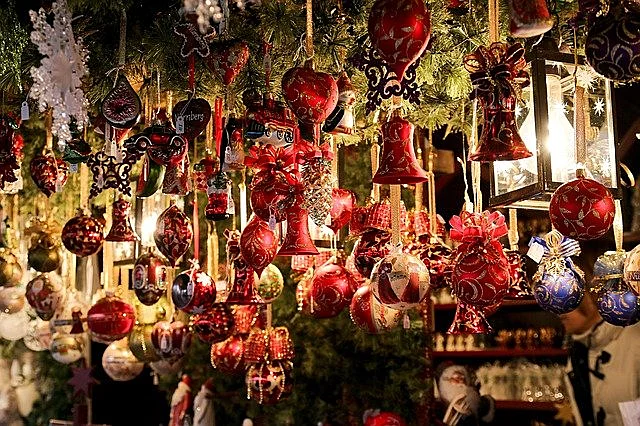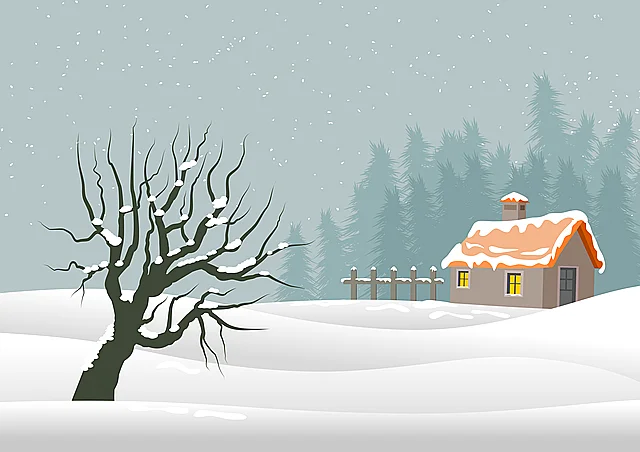Does Christianity really have pagan roots? other major misconceptions about Christmas

Christmas is a beautiful time to be with family or close friends for most people all around the globe. On this day, everyone is used to offer presents to relatives and godchildren. This celebration has a long and illustrious history.
Many people managed to forget that today is the day when the Savior, Jesus Christ, was born into the world. The event has been painted in mysterious hues throughout the years, and it has been overrun with countless rituals, customs, and illusions. Everything seems to repeat itself from year to year, but whence did these weird yet familiar biases originate?
Christmas, like Christianity, spread over the globe
The custom of celebrating Christmas is said to have expanded with the Christian religion. It gradually adopted paganism and its practices. To enable pagans to enjoy their traditional celebrations, the Christmas feast was added to the winter solstice day. This is somewhat correct. The early Christians did not commemorate the birth of Jesus Christ. The point isn’t only that no one knows exactly when it is. The essential point is that birthday celebrations were deemed a pagan ritual and, as a result, were outlawed.
Birthday celebrations were frowned upon and despised by the early Christian church. The date of a person’s death was seen as much more significant. As a result, Easter and Good Friday have long been the most significant holidays.
Later on, the Christian church began to commemorate the feast days of the so-called saints. The year of Christ’s birth was first mentioned in the year 200. It was recorded in ancient Egyptian manuscripts that the date was May 20. There were additional messages as well, each with a different date. The date December 25 was first recorded in the fourth century. The Savior was given a birthday under the Roman calendar. The holiday’s popularity grew considerably later.
Christmas did not take on the shapes that we are acquainted with until the 17th century. Everyone started exchanging presents, singing Christmas songs, dressing up, putting up plays, and doing charitable work.
All of these characteristics were nonetheless rejected by the Puritans, who were Evangelical Christians. They didn’t do it because they were as dull and depressing as many people assume. They just relied on the Gospel scriptures, which gave no hint that Christmas should be observed. In the middle of the 17th century, the Puritans were able to have this feast officially abolished.
Christmas supplanted the pagan celebration
Christians continue to celebrate Christmas on various days until this day. Some people commemorate December 25, while others celebrate January 7. The date of Christ’s birth is uncertain. In reality, there is just one day set aside for festivities. It’s only that the Orthodox choose to set themselves apart.
The Gregorian calendar, sometimes known as the “new style,” is used by the majority of nations throughout the globe. In this view, it is only natural that Christmas is observed first, followed by the New Year. On the other hand, the Orthodox Church has opted to keep the date of Christ’s birth as it was in the “old manner,” that is, according to the Julian calendar.
In reality, there is just one day – December 25 – which is the same on both calendars. We live one day at a time, yet we celebrate Christmas on January 7 in a unique way. Strange as it may seem, it is true.
As previously stated, the winter solstice celebration of December 25 is significant for pagans. Simply renaming it Christmas was enough to spread Christianity among the pagans and sustain it. Both yours and ours worked out well. The pagans converted to Christianity while keeping their traditional festivities. However, there is some compelling data that shatters this theory.
One theory links the date to an edict issued by the Roman emperor Aurelian. Sol Invictus, or the Unconquered son, was honored with a feast. It was now a fully pagan celebration, and Aurelian had never even come close to becoming a Christian. This ordinance was made following the formation of the Christmas holiday, among other reasons.
Nothing from the pagans was adopted by the earliest Christians. On the contrary, they strove to keep as far away from all things heathen as possible. Over the decades, these customs have pervaded Christmas celebrations. Only in the 12th century did the date of December 25 become widely accepted.
So, how did this date come to be? Everything turned out to be a lot easier than I had anticipated. Christ is said to have been conceived and crucified on the same day. The date is March 25, according to the Roman calendar. It will be December 25, exactly nine months later.
The ice stronghold of the North Pole
Perhaps it was once an unchangeable and absolute fact. Scientists and ecologists predict that the North Pole will be fully ice-free in the next hundred years. These projections are based on the fact that the average temperature in the Arctic increases substantially faster than the rest of the planet over time. Many scientific bodies, such as the University of Western Australia’s Oceanic Institute, agree.
The release of methane into the atmosphere caused by fast warming on the Arctic shelf of Eastern Siberia is contributing to the huge melting of ice in the Santa Claus lair. Methane was formerly trapped there by permafrost, but since its release, the temperature has risen dramatically and continues to climb, even in the deepest depressions. This data is astonishing in terms of numbers. The Arctic has lost nearly 40% of its ice since 1980. Mankind will soon have to cope with the terrible effects of melting glaciers, regardless of where Santa Claus resides.
Poinsettias are quite hazardous

The poinsettia is a delightful flower. It is often capped with red, pink, cream, and sometimes variegated bracts throughout its blooming season. This plant seems to be breathtakingly gorgeous. It is seen as a sign of wealth and luxury in the household. It’s not for nothing that this flower is often presented around Christmas and New Year’s, and it’s frequently used to adorn homes and apartments. As a result, the poinsettia is also known as the Christmas star.
The euphorbia family includes this plant. Poinsettia, like all of its relatives, is toxic. Its juice is caustic and poisonous, causing irritation, allergies, nausea, and diarrhea in rare instances. As a result, the custom of presenting this flower has no positive connotation. Pets and little children, in particular, may be poisoned by ingesting a petal or leaf.
Everything you need to know about the three wise men
The picture of the Three Wise Men, often known as the Magi, is ubiquitous on Christmas cards and artworks. They follow the Star of Bethlehem across the desert on camels to honor the infant Jesus. This artwork is not based on the Bible.
The narrative of the wise men is only told in Matthew’s Gospel. Even back then, it says they first went to King Herod, then followed the stars to Bethlehem, where they discovered Mary carrying the infant Savior. They presented Him with gold, incense, and myrrh as presents. The Evangelist Matthew only tells us this. He makes no claims about how many there are, that they are kings, or that they rode camels. But, from Christmas to Christmas, the same scenario plays out.
In a more appropriate current translation, the phrase wise men implies – wise guys. To put it plainly, scientists. They were originally represented in the second century, and by the third century, they had been given royal authority qualities. Most likely as a result of the announcement of such priceless items.
These wise men feature at the time of Christ’s birth in nativity scenes all across the globe during the Christmas season. On the other hand, the wise men should have appeared to Jesus and his mother just a few months after his birth, according to Matthew’s Gospel. After all, Herod ordered the death of all newborns under the age of two in order to kill the Jewish King’s newborn son.
Suicide is at an all-time high on Christmas Day
Christmas is a beautiful family event filled with joy, laughter, and warmth. Many people have heard that the number of persons who have chosen to commit suicide is increasing in the days leading up to this event. It seems to be reasonable. Someone is joyful and rejoices in the company of loved ones, while someone another is lonely and has lost a family or a loved one. Against the backdrop of all the festive magnificence, this loss is felt most acutely during Christmas. Many people choose to depart this planet.
This, however, is not the case. In reality, data show that suicides are more common in the spring and summer. Indicators are at their lowest during the winter months. The number of fatalities is rising as a result of excessive celebration. Respiratory illnesses, food poisoning (overeating, drinking), and cardiovascular problems are examples of these. The number of such instances rises around the holidays, and the medical personnel is decreased. People who are preoccupied with family gatherings are less likely to rush to the hospital at the first symptom of sickness.
Environmentally, Christmas trees are a concern

The controversy over whether to choose an artificial or a live tree has raged in recent years. Proponents of the former argue that the genuine tree’s life is preserved, that it may be reused, and that carbon dioxide emissions are reduced. The second argument is that Christmas trees are cultivated just for the occasion and that their destiny is to end their life with tinsel and toys, much to the joy of the public.
In truth, both sides are completely wrong. Alternatively, depending on which side of the issue you look at, all sides are equally correct. Each belief has advantages and disadvantages. When trees grow, they absorb carbon dioxide. Nature will benefit. The manufacture of synthetic ones pollutes the environment with a variety of chemical byproducts. Another point to consider is that driving your automobile behind a Christmas tree cancels all of the advantages it has provided. This is OK if the fake tree was purchased once and has been used for many years.
Living trees are amazing. They grow and benefit by providing habitat for tiny animals and birds as well as increasing the amount of green space available. Only reality says that caring for them necessitates the use of additional pesticides and other chemicals at the same time. As a result, there is no such thing as a middle ground. Both have the potential to be equally excellent or equally awful. Walking to work or riding a bike a couple of times a week will be considerably better for the environment. Fir trees are only a handy source of debate.
Christmas sceneries with the sign of the moon
The moon is often shown in Christmas photographs. It is either declining or rising at all times. Only a full moon in the evening can be seen from such a great altitude in the sky. This is merely a breach of one of nature’s rules. But it isn’t the only one. Snowflakes are often shown as well. It’s only possible for them to be hexagonal. Many of them are shown with the incorrect number of sides for whatever reason, as seen on anything from Christmas cards to brown paper. There’s also no rationale behind this.
A traditional nativity scene
The Nativity scenario that people are so familiar to, is not Scripturally true, as explained above in the part on the Three Wise Men. In two Gospels, the scenario is detailed. The wise men are mentioned by Matthew, while the shepherds are mentioned by Luke. None of these writings describe the customary nativity scenes and postcards’ animals, angels, and other qualities.
Traditional pictures are derived from early art, which allowed us considerable creative license in this regard. After all, the Bible could only be read by priests at the time, and it was not accessible to the general public. People couldn’t acquire any information about Christmas from the Masses since they were conducted in Latin. People learned about it via works of art, most of which were based on the author’s imagination.
Two animals, in particular, are virtually always included in nativity scenes: a donkey and a bull. They aren’t referenced in the Bible at all. Animals warmed the newborn with their breath and body heat in early portrayals. During the Renaissance, less respectful portrayals began to emerge. They chew on the baby’s clothing and blankets on some of them. They battle one other for the veil of Jesus on the rooftop of a church in Nantwich, England. Traditionally, the donkey was thought to represent Jews who refused to acknowledge Jesus Christ’s divinity.
Deer that flies
Santa Claus is based on Saint Nicholas’ original picture. However, the flying deer no longer seem to conform to the ideals of a good Christian saint. According to Sierra College professor John Rush, this is the result of the activity of certain magical mushrooms.
One of the earliest shamanic rituals was the gathering, drying, and distribution of the fungus Amanita muscaria over all of Siberia’s natural reindeer pastures. It’s a crimson mushroom with white dots that grows near the foot of trees. This is the color scheme that became the standard for Santa’s outfit.
According to Rush, the rise of dried mushrooms has resulted in some incredible hallucinations. Local animals, unsurprisingly, were the major players. Travelers started to relate fantastic tales of flying deer carrying sledges loaded with presents across the sky.
Other analysts feel that the myth’s genesis may be traced back to a more commonplace cause. The poem “The Night Before Christmas” was written by Clement Clarke Moore in 1822. There, he depicted all of Santa Claus’s characteristics, including flying reindeer. Originally titled “The Visit of St. Nicholas,” the text is widely regarded as the most authoritative source of information regarding Santa Claus.




